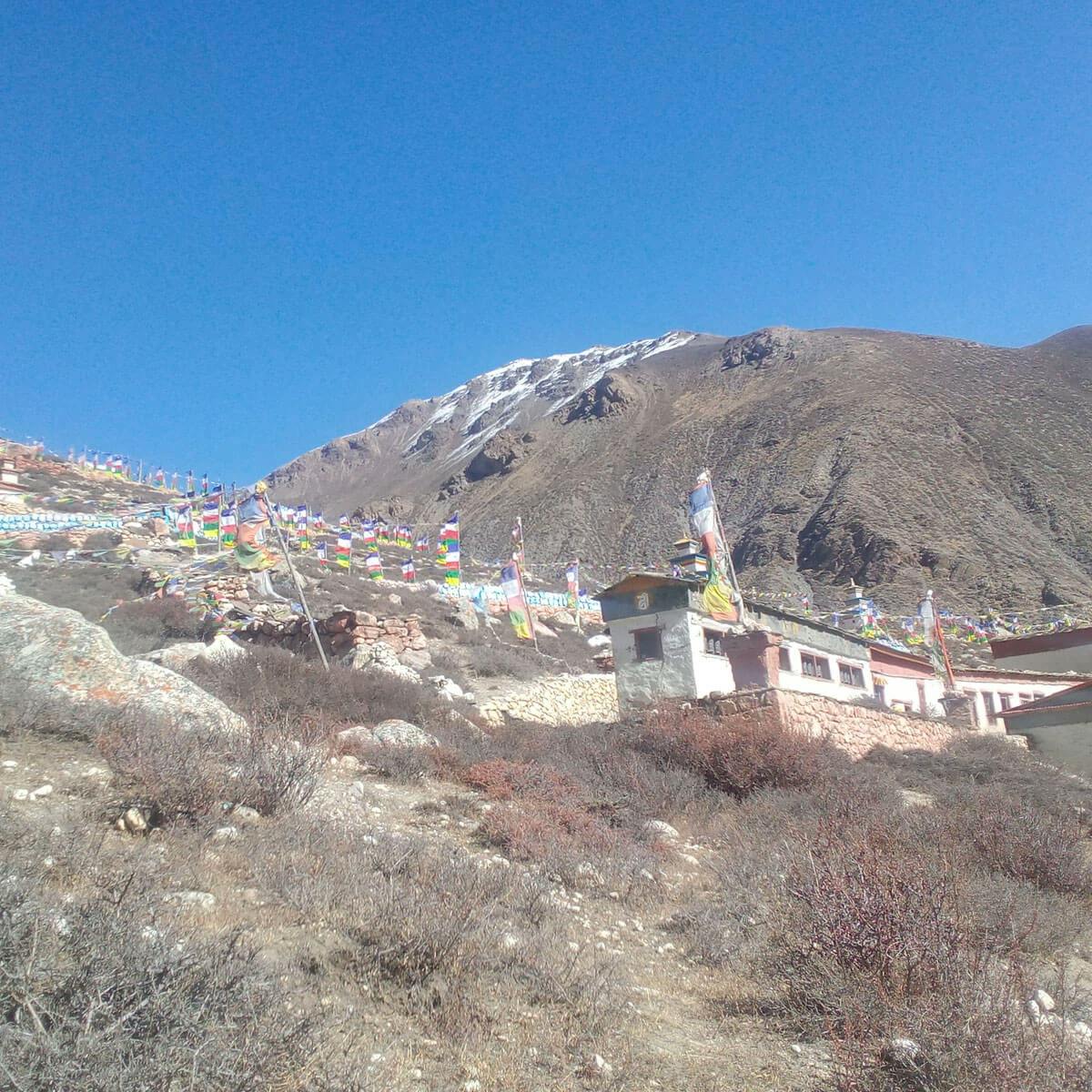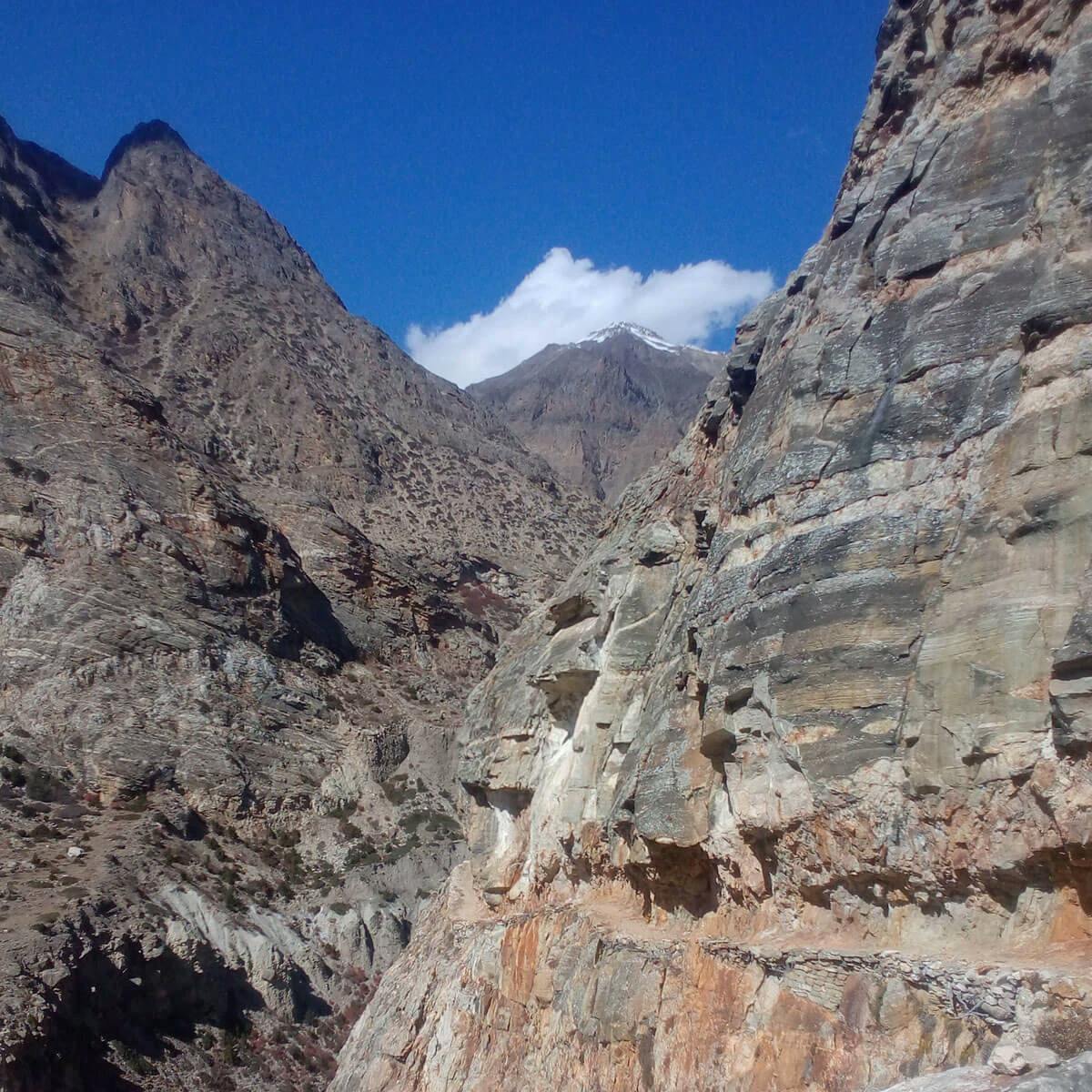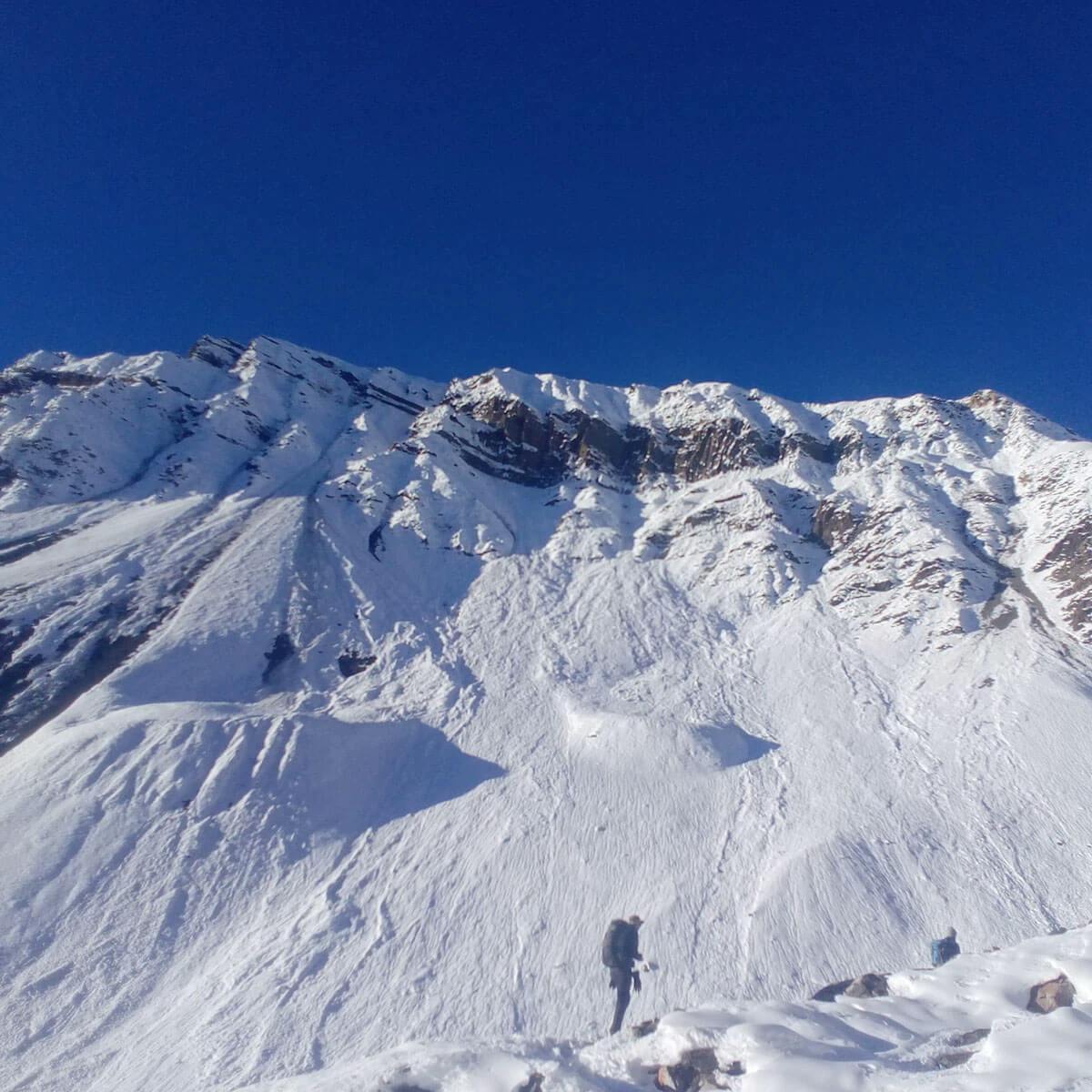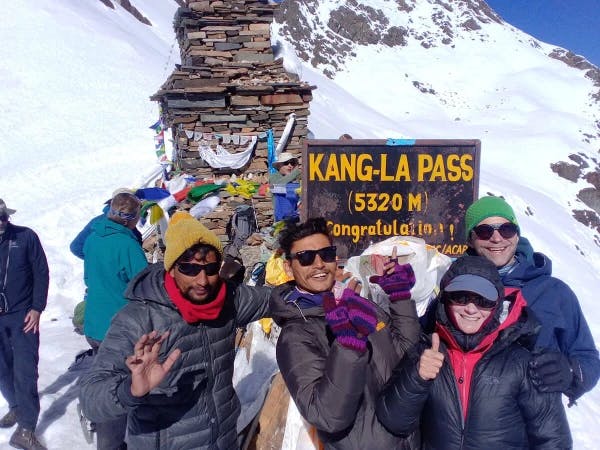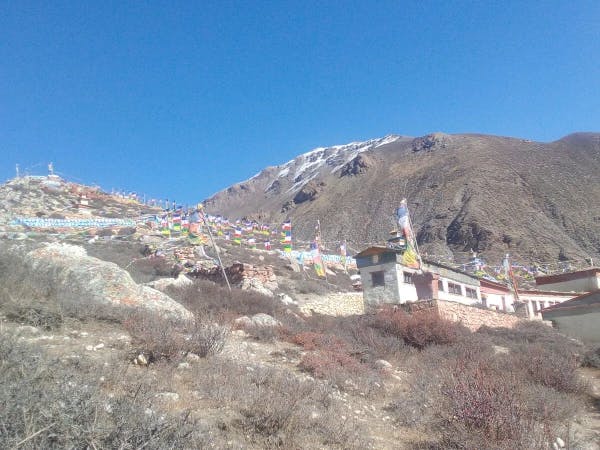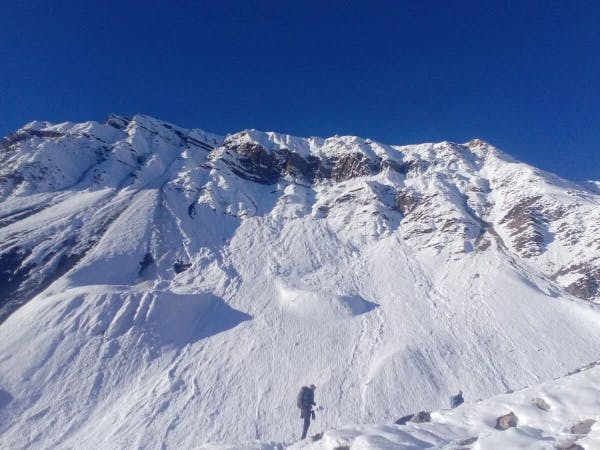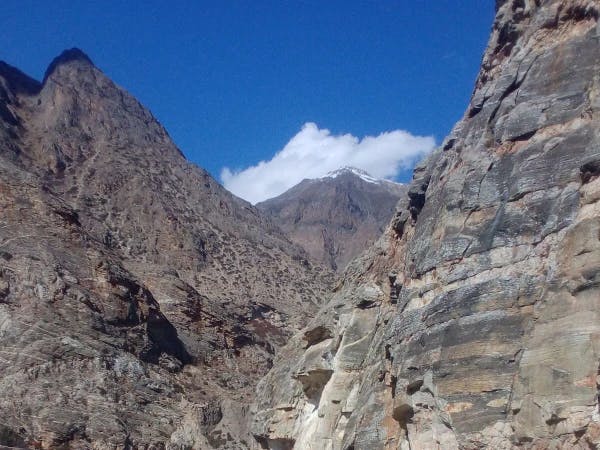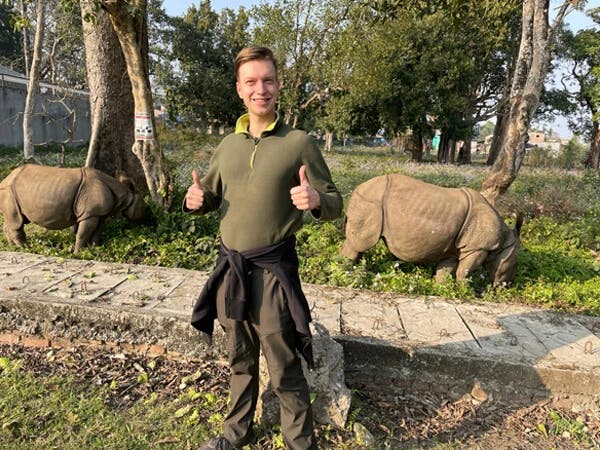Nestled amidst two of the most significant trekking hubs of Nepal, in between the Annapurna and the Manaslu regions, the Nar Phu Valley Trek is a once-in-a-lifetime opportunity one must seize to explore the pristine natural and cultural beauty of the upper trans-Himalayan region of the country, which is home to the highest mountain in the world, Mt. Everest (8,848 m), along with several other eight-thousanders.
The Nar Phu Valley voyage provides an extraordinary insight into the unique ethnic community of the nation, otherwise called Khampas (Tibetan refugee) who shares a closer resemblance to Tibet due to its proximity when you pass by its naturally abundant trekking route through lush forests of rhododendrons, oak, and pine to the alpine wilderness with minimal vegetation and wildlife to come across.
On this journey to Nar Phu, situated in the Manang district of Nepal to the north of Annapurna, you will traverse through the land of exotic flora and fauna in a harmonious bond with the Himalayan locals, adding more thrill to the overall trekking trail. Hence, Nar Phu Valley is a fantastic holiday destination in Nepal to spend the most adventurous days in the closer vicinity of the tenth and eighth largest peaks in the world, Mt. Annapurna (8,091m) and Mt. Manaslu (8,163m).
Trek Highlights
- Delve into the most unspoiled and remote part of the Nepalese Himalayas.
- Observe the rich Tibetan-influenced culture and lifestyle of the Manaslu and the Annapurna trekking regions.
- Enjoy your stay in authentic villages with ancient monasteries, gompas, mani walls, and prayer flags.
- Engage yourself in the adrenaline-filled crossing of the Kang La and Thorong La high mountain passes.
- Mark your journey in the highly restricted culturally abundant villages of Nar and Phu.
- Relish in the most stunning and majestic views of Annapurna I and its ranges: Himlung Himal, Gangapurna, Tilicho Peak, and the eighth tallest grandeur in the world, Mt. Manaslu (8,163m).
- Immerse yourself in the scenic and cultural apple orchards of Jomsom.
- Charge up with the various adventurous activities in the tourist paradise of Pokhara and many more.
Why Trek Nar Phu Valley?
Nar Phu Valley is a top-notch off-beaten-remote trekking path located in the Annapurna region of Nepal, often referred to as the hidden gem, providing a unique combination of culture and nature in its most original state that has preserved the ancient Tibetan culture distinctive from the rest of other trekking regions.
Therefore, Nar Phu Valley is a must-visit for the most scenic and gratifying experience, presenting you with the true nature, culture, and adventure of a lifetime in the isolated Himalayas of Nepal that many have not yet heard of, adding much to the thrill and enjoyment to be called the true Himalayan journey that comes once in a while, leaving the impression to rely on the rest of the life where one can expect:
Striking Natural Beauty
There are a couple of reasons why the Nar Phu offers the most authentic, untouched, and stunning natural beauty of the Himalayan region. It could be its geographical condition, without much access to roads and airways, or the restricted land, allowing only a countable number of trekkers and travelers each year.
Regardless, the Nar Phu Valley expedition journeying from Kathmandu offers a diverse range of landscapes, from lush green forests to rugged high desert terrains and varying ecosystems that are not only visually retreating but also culturally magnificent.
Throughout the adventure to the Nar Phu valley, the Himalayan panorama of Annapurna (8,091m), Manaslu (8,163m), Dhaulagiri (8,163m), Himlung Himal (7,126m), Kang Guru (6,981 m), and Pisang (3,250 m) never leaves your sight.
Remote and isolated trekking route in Nepal
The Nar Phu Valley lies in the northern part of the Annapurna region, tucked away from the more popular and frequently trodden trekking trail, which was, until recently, a restricted zone of the country requiring a special permit to enter. This has contributed massively to maintaining the area's hidden charm at the top.
On the other hand, the Nar Phu Valley route has relatively limited modern facilities in a tea house, serving as just the right destination for backpackers seeking a quieter and more serene adventure in the Himalayas of Nepal.
The overall region where the Nar Phu Valley trekking takes place itself is low on modern infrastructure and communication, ensuring a remote experience while you make your way through several small and scattered villages, observing less busier trails secluded in the lookout of Annapurna, Dhaulagiri, and Manslu ranges.
Khampas and their unique way of life
The valley of Nar and Phu is predominated by the people of Khampas (Tibetan refugees or warriors). Traditionally, they inhabit the eastern regions of the Tibetan Plateau and you will get to encounter them during your 16-day visit to the Nar and Phu Valleys in Nepal.
The root of Khampas takes you to Tibet, whose influence can be seen today with distinctive dialects, attire, costumes, traditions, culture, and religious beliefs. Historically, they were yak and sheep herders and breeders living a nomadic life, while most of them still engaged in agriculture.
Interaction with natives from here offers you a broad insight into their unique customary life that provides value to every connection formed in different stages of human development while living remote from contemporary civilization and progress.
Therefore, the Nar Phu Valley area is endowed with a rich cultural legacy of Khampas along with other several ethnicities in their own world, far away from the modernity that you can boast of being a part of, even if it was for a short time.
Adventure and challenge in the Kang La Pass and Thorong La Pass
The contributing factor that makes the Nar Phu trek an adventurous 16-day journey is no wonder, the entailing of two major high passes in the Annapurna region known as Kang La and Thorong La.
The first point you will cross in the Nar Phu Valley Trek is Kang La, at an altitude of 5,306 m above sea level, right after leaving the village of Nar, located in the Manang district of the Annapurna region, working as a bridge to connect the Nar Phu Valley with Manang.
The views of snow-capped mountains, primarily Annapurna II, Gangapurna, and Tilicho, reward you on a successful ascent that demands a descent degree of physical fitness and some past experience of hiking.
In the same phase, Thorong La Pass is another mind-blowing mountain pass in Nepal, and it is also the maximum altitude you will be at, connecting the village of Manang to the west with the temple of Muktinath to the east.
Located at an elevation of 5,416m (17,769ft), crossing the Thorong La Pass is considered a significant achievement for trekkers and travelers, which is a key feature of the Annapurna Circuit Trek as a scenic gateway between the valleys of Marsyangdi and Kali Gandaki.
Upon summiting the pass, you will be offered more enhanced and alluring views of the surrounding peaks, including Annapurna, Dhaulagiri, Nilgiri, and other prominent snow-clad mountains. The first golden hue from the sun over this nature’s grandeur is to die for; hence, trekkers often prefer to make an early bird hike to the pass.
Both passes are situated at a higher altitude than the sea, posing a possible threat of altitude sickness while navigating through steep and rugged terrain, which can be physically challenging to pass through with a probability of snow and ice on the trekking route in the winter.
Therefore, proper acclimatization is crucial before attempting to ascend these high-altitude passes, aside from staying hydrated, consuming a healthy diet, and collecting knowledge in spotting altitude-related issues and symptoms.
Holy Sanctum of Muktinath
Considered to be one of the holiest Hindu and Buddhist shrines as one of the 108 Divya Desams (sacred places) dedicated to one of the supreme deities from Hindu mythology, Vishnu is Muktinath near the town of Jomsom and the Annapurna Circuit trekking trail in the Mustang district of Nepal.
Ammonite Adventure & Treks Pvt. Ltd. is known for its best itineraries to venture into almost every part of the beautiful corner of the planet, including Nar Phu in Nepal, which incorporates a must-visit trek to Muktinath as well.
The main temple is of pagoda style and has a golden enshrined idol of Lord Vishnu, an eternal flame, and 108 stone water sprouts. Pilgrims believe that a visit to Muktinath ensures salvation (moksha) from each day of human suffering upon taking a bath in the bulls’ head-shaped sprouts, cleansing the sins committed by human faults.
A typical day at Nar Phu Valley
A typical day in Nar Phu Valley begins with lovely rays of sun over the sky-towering hills and mountains, while the locals immerse themselves in their daily simple lifestyle of cultivation, animal husbandry, and the trade of organic items.
Depending upon the varying season, you will pass through the terraced farms of barley, wheat, and potatoes on each trekking day to Nar Phu Valley. The majority of native inhabitants are Gurung, Khampas, and Managis, who speak their own dialects and are active practitioners of Buddhism.
Therefore, throughout the journey to the cultural treasure of Nepal to Nar and Phu, you will be walking side by side with the historic monuments of monasteries, gompas, and mani walls filled with the pleasing smell of incense burned as an offering.
It would be iconic to visit all these ancient and extremely significant landmarks of the Annapurna region, where one must show respect for its distinct culture and costumes.
Nar Phu Valley Trekking Itinerary
Multiple itineraries can be tailored to begin an excursion to Nar Phu Valley, which usually starts with a spine-tingling drive from Kathmandu, enjoying the scenery of the surroundings to Jagat with Ammonite Adventure & Treks Pvt. Ltd.
Tracing the salt trading route of the classic Annapurna Circuit Trek, you will hike up to Meta and cross the growling Marshyandi River, which eventually leads to Nar Phu Valley, whose trail observes fluctuation from time to time.
We know the significance of acclimatization, especially when you are crossing two of the laborious high-altitude mountain passes, and hence have allocated exploration days at Nar and Phu rather than directly hiking up to Kang La Pass or Thorong La Pass.
Nonetheless, before you cross the Throng La Pass you will spend a night at a high camp of Thorong Phedi according to the best 16-day itinerary to trek Nar Phu Valley making a path through the village of Ngawal that exposes you to the expanded sights of Kang Garu, Pisang, and many more.
From Ngawal, this 16-day itinerary of the Nar Phu voyage takes you to cross one of the highly elevated passes, Thorong La, that goes through Manang, Yak Kharka, and Phedi, which later descends to Muktinath after completing the discovery of the otherworldly intimation of Annapurna ranges on rejoining the Annapurna Circuit to arrive at Manang.
From Muktinath, it is a comparatively easier trek to Jomsom to board a flight to Pokhara, the city of adventure and tourists. Highly developed in comparison to other remote sections of Nepal yet still contains the pure sense of natural beauty and adventure in the glorifying presence of Machapuchare, Annapurna, and Dhaulagiri.
The itinerary to trek Nar Phu Valley bids farewell with a ride back to Kathmandu from Pokhara with an unforgettable collection of memories to take pride in.
Cost to Trek Nar Phu Valley 2024 and 2025
The cost of a trip to the Nar Phu Valley can experience a noticeable fluctuation, depending on the travel agency you have chosen for your upcoming journey to the restricted land of the Mustang trekking region.
In general, a package with an international tour operator can cost you between USD 1,500 and over USD 2,000, which is considered the standard price of the package. However, with Ammonite Adventure & Treks Pvt. Ltd., you can do a 16-day Nar Phu Valley Trek for USD 1,265 and receive an extraordinary discount on group treks.
We are locally based travel and trek organizers customizing the best budget-friendly adventures to the Himalayas of Nepal, including the Manaslu Circuit Trek (13 days), the Tsum Valley Trek (17 days), and the Manaslu Circuit Tsum Valley Trek (20 days).
Our Nar Phu Valley package cost for 2024 and 2025 takes care of essential trekking logistics such as food, accommodation, and required permits, along with the everyday expenses of guides and porters, including their salary, meals, trekking gear, and equipment besides the accommodation.
Our goal is the satisfaction and happiness of each trekker with the dream to spend time in the Himalayas of Nepal while making bang for their buck.

